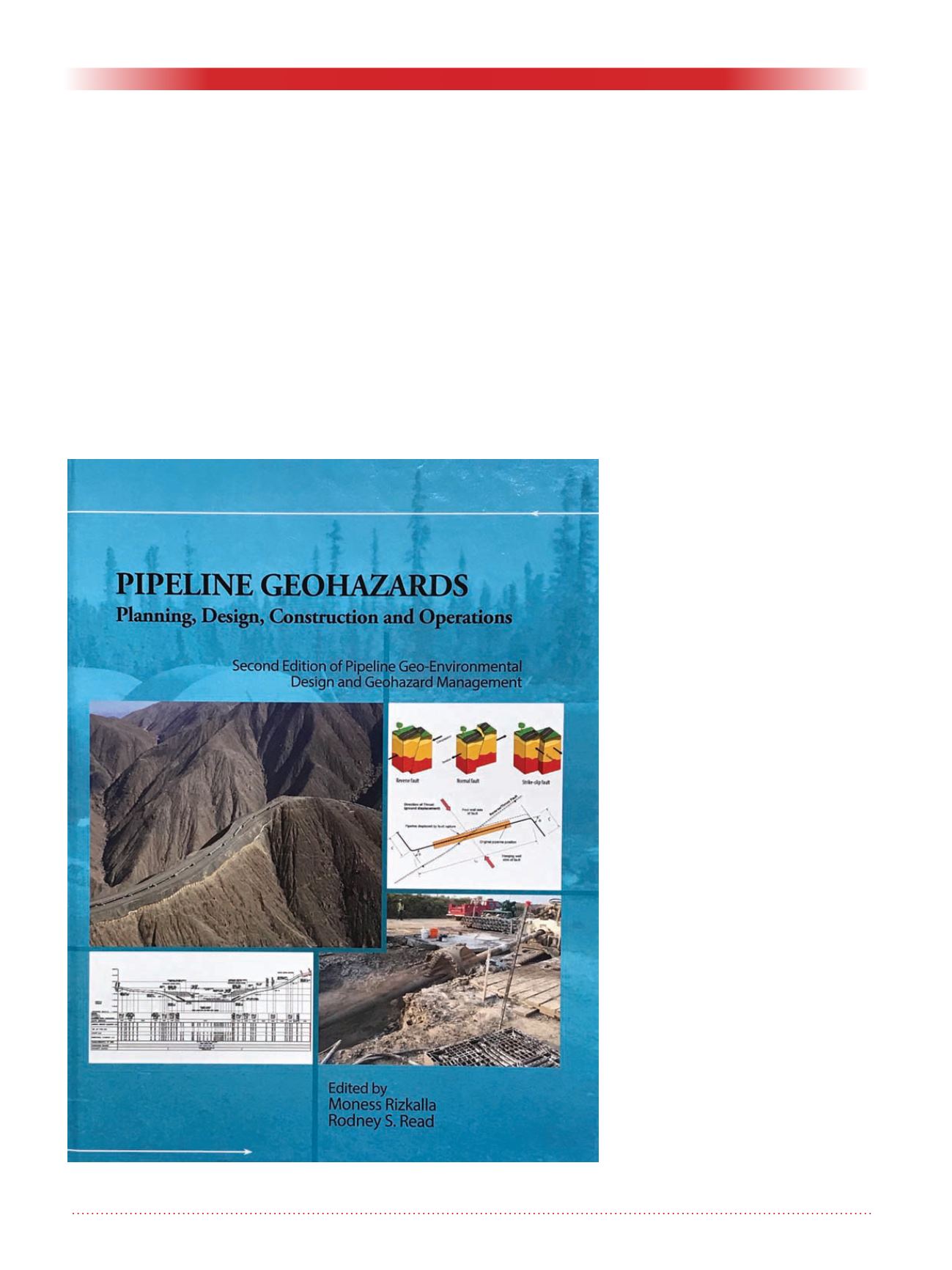
46
Geotechnical News • December 2019
GEOHAZARDS
Pipeline geohazard assessment – reducing risk to
linear infrastructure
M. Rizkalla, R.S. Read
Introduction
Pipelines and energy production are
two topics that have dominated the
news cycle in Canada. Geohazards
- threats of a geological, geotechni-
cal, hydrological, or seismic/tectonic
nature – are particularly relevant to
both topics.
Geohazards may negatively affect
people, infrastructure and the envi-
ronment. In a pipeline integrity
management context, geohazards are
considered under the threat category
of Weather-related and Outside Force
in the American standard ASME
B31.8S. The Canadian standard CSA-
Z662 addresses geotechnical failure of
pipelines due to ground movement and
related processes in several sections
and annexes. Each of these standards
allows flexibility in geohazard assess-
ment as part of pipeline integrity
management.
As a result of this flexibility, several
systems to identify, characterize,
analyze and manage geohazards have
been developed by operators and
geotechnical/geological engineering
practitioners. The evolution of these
systems, and general expectations
regarding geohazard assessment,
toward quantitative geohazard fre-
quency assessment, is a trend in recent
pipeline hearings and related regula-
tory filings in Canada.
While this trend is intended to frame
geohazard assessment in an objec-
tive and repeatable manner, there
remains an element of subjectivity
in the assessment process at various
project stages, requiring subject matter
expertise and expert judgment to make
informed and defensible evaluations
of related observations and conditional
probabilities.
In an attempt to frame the current state
of geohazard assessment for pipelines,
a new book “Pipeline Geohazards:
Planning Design, Construction and
Operations” (Rizkalla and Read,
eds., 2019) has been published by
the American Society of Mechani-
cal Engineers (ASME). This article
provides a brief synopsis of the book
(Fig. 1).
Figure 1: ASME book “Pipeline Geohazards: Planning, Design, Construction
and Operations” (Rizkalla and Read, eds., 2019).


